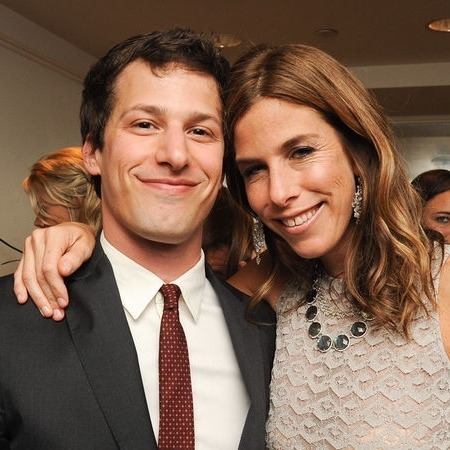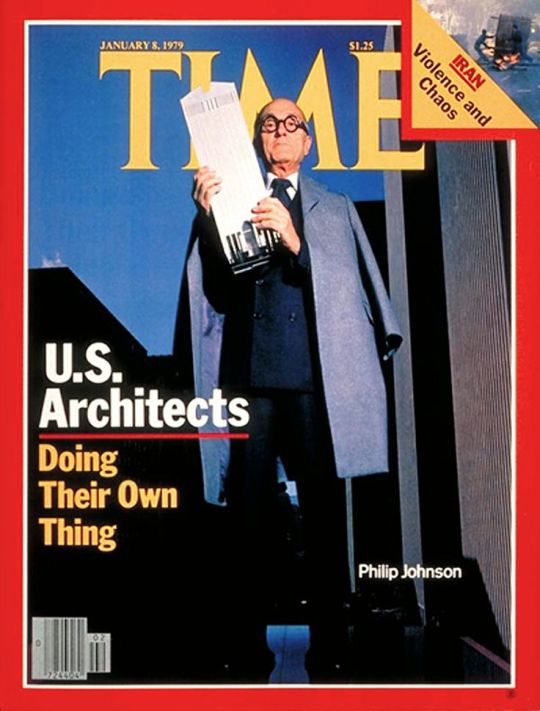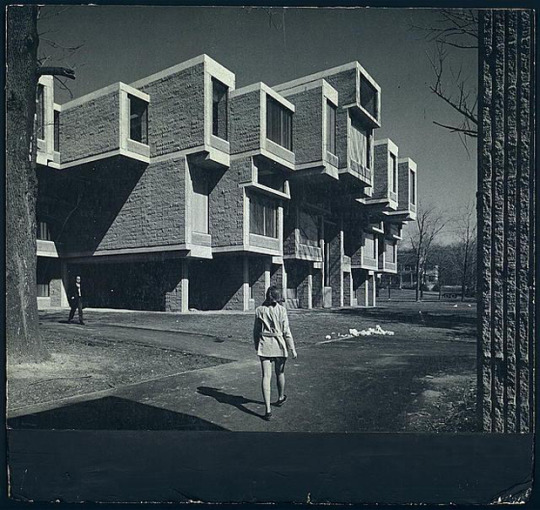#2010-2015 government you will forever be famous to me
Explore tagged Tumblr posts
Text
Week 5: El Paquete Semanal
The sparks of inspiration kindled me this very ordinary morning when I was brushing my teeth and listening to my subscribed uploader in Bilibili, a Chinese version of YouTube. This uploader, consisted of two girls, calls the pair “let’s chat something.”
Their black and white profile photo without any facial organs seems self-assuming and even intimidating at the first glance. What might they chat about? Local feminist practices? Dark fairy tales?

Yet quite jubilant as they are, their contents are mostly BL-novel recommendations. Their videos usually follow these steps: one will chat about character settings of the protagonists, plot spoiler warning, plots, ending with comments from the other girl.
BL, the acronym for Boys’ Love, is a genre of fictional media featuring homoerotic relationships between male characters. Originating from Japan as the Yaoi culture (or Fujoshi culture, Fujoshi as the female consumers of BL), this fad came to China in the late 1990s with an increase in popularity in the 2010s.
Just like locals in Cuba have limited access to the Internet, so is BL media suppressed in China. In 2015, laws prohibiting depictions of same-sex relationships in television and film were implemented in China. Reasons behind the prohibition include anti-pornography, violation of copyrights, and protection of masculine hegemony. Of course, these laws cannot stop Fujoshi from creating and seeking their entertainment. So where can they go?
I put together a ‘Paquete Semanal’ for Chinese Fujoshi. 😊
The official account of “let’s chat something” in Bilibili: https://b23.tv/DjHQAK

I put their videos in the weekly package, because (1) they update weekly so my consumers can chase them as a series (2) their videos help form the sense of solidarity in the Fujoshi community with bullets comments from other viewers.
2. Literature: http://www.jjwxc.net/

Jinjiang, a website hosting vast amounts of literature, is the nest for famous Fujoshi writers and sensational IPs (Intellectual Property.) Literature ranked top deserve spots in the ‘Paquete Semanal.’
3. Erotica: https://i.haitangshuwu.com/

Although JJ is a go-to web for BL novels, you can see from the bottom of the web that it is under government censorship. After all, who does not love pornography, and the spice of trespassing laws?
4. Manga: https://yandanshe.com/blwj/
But BL manga webs all face this danger of coercive shut-up once spotted by government censorship. Some will change names or IP addresses, while some just vanish forever.
5. Radio dramas: https://www.guangboju.org/bl/

6. Films: https://www.soupan8.com/file/31968597
Unfortunately, no websites are curated for BL films, but well-known films, for example, Addicted 上瘾, Guardian 镇魂, The Untamed 陈情令, are attainable via Baidu pan. An insider with knowledge of the latest BL films is needed to fulfil this downloading mission.
7. Anime: http://danm8.com.cn/forum.php
8. Community: https://sakura-bbs.top/

9. Music: https://www.bilibili.com/video/BV1ns411U7VW/ and https://music.163.com/#/album?id=2092772&userid=9216686

10. Game: https://blgamesworld.net/

This should go together with instructional tutorials to install the game.
11. Dōjinshi: cosplays and birthday celebration pictures for characters. Writers will post pictures not included in the books for special occasions on platforms including Twitter, Sakura Community, etc. This reminds me of a huge problem, how to establish more interactive communications between Fujoshi and BL media producers, just based on a Flash-drive. Surely, I can follow demanded writers on Twitter and screenshot their moves, but the communication will always be delayed and intermediated.
12. To solve the problem above, VPN is necessary. Technology: https://www.szh47j.com/REWWSNU

13. For books that one really loves and just wants to hold the paper book in hand, (Taiwan) websites that sell comics: https://www.kingstone.com.tw/ and https://www.books.com.tw/web/sys_cebbotm/cebook/1503?loc=menu_th_784_002

14. Manga Apps: http://app.blmh.win/
15. News: https://weibo.com/p/1008086265fb47fff26a2d6bd2540d6c440afe/super_index#_loginLayer_1633555794223
Putting the content above together challenged me, for I realized in my process how limited knowledge I have of the Fujoshi community. Because the products of BL media include different types, I tried to stand in their shoes to exhaust my imagination of what or how they may consume. Another challenge is: I run out of links, even knowing there must be more content. The human resources and information exchange needed for such infrastructure building are beyond my competence. ‘Paquete Semanal’ is a brilliant individual idea as well as communal efforts. Specialists in certain types of media searching and network of collection and distribution are essential in forming the weekly package in an organized and timely manner. Like said in the video, “it’s a business.”
References:
Davis, Rebecca (5 June 2020). "China's Gay Rights Stance Can't Derail Demand for LGBT Films". Variety.
2 notes
·
View notes
Text
In honor of the impending return of Brooklyn 99, here are 99 reasons that...

1. He was precocious enough to know, at 5 years old, that he wanted to change his name (x)
2. He has a bunch of nicknames: Sandy Amberg, Young Sandwich, etc. but the most endearing one is 'Droidy', his family's name for him (x)
3. He is still super close friends with people he's known since: Elementary School (Chelsea Peretti) (x)...
4. Junior High/High School (Kiv and Jorm) (x)
5. �� Summer Camp (Irene Neuwirth) (x)

7. ...and Film School (Chester Tam) (x)
8. Before he met Joanna, he dated other famous ladies but - out of respect - he never discussed it/them (x)
9. He loves turtles and tortoises. When he was a kid, he had a pet turtle that he named 'Squirt' because the first time he held it, it peed on him. His Mom, Margie, accidentally killed Squirt when Andy was at Summer camp... (x)
10. … Maybe this is why, when shooting 'Popstar', Andy fell hard for Maximus (Conner 4 Real's turtle). He says they "had a good thing going" and that he wanted to adopt him. In the end, he decided against it because there are a bunch of coyotes in his neighborhood and he was worried the little guy wouldn't be safe. (Popstar: DVD Commentary)
11. Speaking of his Mom, despite being a super private person, he appeared on 'Finding your Roots' so that he could help her track down her birth family (x)
12. When he succeeded he cried (although we never got to see it on camera) (x)
13. That's because, like all good boys, he loves his Mama which is why - as part of the same episode - he said "My mom is basically the kindest person I know… and many people would corroborate that" (x)
14. Andy's Sisters, Hannie (Johanna) and Darrow, used to make him wear diapers and put his hair in pigtails until he was 5 years old. He says he didn't mind because he just liked that they were paying attention to him (x)
15. That's why he sees his identity in comedy as being 'America's kid brother'. When he was young, he would annoy his sisters until they laughed and he claims to have been replicating that approach to entertainment ever since
16. Although a bunch of his characters have 'Daddy Issues', Andy definitely doesn't. He's super close with his Papa (Joe) and has said "he's a good man" and "the best Dad in the world" (x)
17. Joe was Andy's youth soccer coach and in one scene in 'Hot Rod', Joe's favorite photograph can be seen in the background. It shows a very young Andy posing with a soccer ball, after "scoring the winning goal against Mersey" (x)

18. He's been a loyal Golden State Warriors fan since he was a little kid, living in Oakland (then Berkeley) and, in 2010, he correctly predicted that they would "win a Championship in my lifetime" (x)
19. The proceeds from his Umami Burger ('The Samburger') went to a deafness early detection program in Berkeley. This cause is close to his heart because Margie uses hearing aids and used to work in the special needs program, teaching deaf kids (x)
20. He, Kiv, and Jorm have made multiple donations to their old school district, including $250 000 to its theater program (x)
21. On the subject of The Lonely Island; Andy always goes out of his way to make sure that everyone knows how much he owes to his buddies. For instance, he told Marc Maron, during his WTF appearance, that "I get a lot of credit for what Kiv and Jorm have done" (x)
22. He makes this face when he knows he’s said something naughty…

(Gif credit: @andrewsambags)
23. During his 'Wild Horses' appearance, he said that he can't watch scary movies because they freak him out too much. He told 'Complex' that he's still scared of 'The Shining' (x)...
24. … Similarly, when he was at UC Santa Cruz he worked at the Del Mar movie theater and he had a hard time coping with screenings of 'Species 2' (x)
25. He fell in love with Joanna, the moment he met her, when she greeted him by addressing him as 'Steve the C**t' (x)
26. He listened to 'Ys', everyday for a year, before he and Joanna started dating (x)
27. He bought the original portrait that was used as the basis of the cover art for 'Ys' and gave it to Joanna as a Christmas present, so that she could hang it in her music room (x)
28. He loves birds and goes hiking and birding with Joanna (x)
29. Every new comment he makes about Joanna becomes an instant contender for 'most beautiful thing a person has ever said about their spouse' (x)
30. For example, he readily admits that Jake's iconic heart eyes are the result of him thinking about his amazing wife (x)
31. There are many stories about how incredibly romantic Andy and Joanna's wedding was and Jorm has said that it featured "the most magical vows I've ever heard" (x)
32. The Newsombergs now live in Charlie Chaplin's old house (x)
33. On the Emmys Red Carpet (2015), the year he hosted, they took a momentary break from posing for the world's press to whisper 'I love you' to each other (x)
34. At last year's Vanity Fair party, Andy carried Joanna's purse for her so she could grab a snack (x)

35. He was a semi-permanent fixture in the audience for her recent run of shows for the 'Strings/Keys Incident' tour, even officially confirming his status as the 'President of her Fan Club' (x)
36. He used his Golden Globes monologue to call out the government for framing and murdering the Black Panthers (x)
37. On the Carpet for the Guy's Choice Awards, he called the event "a ridiculous farce", adding that "men already have it so easy - it's insane that there's a show that celebrates them". That makes sense when you consider that he, Kiv and Jorm have made an entire career out of parodying toxic masculinity (x)
38. He once said that only "idiot-ass men" think that women aren't funny (x)
39. He’s been wearing glasses since 7th Grade and he has the most heartbreakingly cute habit of nudging them up his nose, (especially when he wears his Sol Moscot frames) (x)...
40. ... and of rubbing his eyes under them (x)

41. He barely ever wears glasses for roles but he also avoids contacts (because he doesn't like touching his eyeballs) which means he's almost always 'acting blind' (x)
42. He has worn his glasses in character a few times - as 'himself' ('Lady Dynamite'), as 'Paul' ('I Think You Should Leave') and during a very small number of SNL sketches (e.g. during his one appearance in a 'Gilly' with Kristen Wiig) (x)
43. He can't tolerate glare and when that makes him squint it's a sight that's too cute for words (x)
44. He owns about six outfits and has been rotating them for well over a decade (x)
45. He barely ever breaks during shooting/while performing, so when he does it's aggressively adorable. (x), (x)
46. He's a grown ass man who persuades people to come with him to the bathroom because if he goes by himself he'll get lonely (x)
47. He didn't announce he was leaving SNL, until after his last appearance, selflessly choosing not to detract from Kirsten Wiig's huge and emotional send-off (x)
48. He undertook a quest to smell like Lorne Michaels (x)
49. He's ageing like a fine wine (x)
50. To protect their daughter's privacy, Andy and Joanna never announced that they were expecting. They've never released their little girl's name or date of birth and most news outlets still report that they became parents in August 2017 (even though that's inaccurate) (x)
51. Although he's careful not to talk about his daughter often, sometimes he can't keep from gushing about her. For example, when asked about his first year of fatherhood he said: "It’s been the best thing that’s ever happened to me. Just like a beautiful, incredible dream. It has surpassed every expectation I ever had. It’s definitely been very blissful" (x)
52. After their daughter was born, Andy and Joanna spent the first 40 days at home with her (in a practice known as 'confinement'). He's described it as being "a really special time". (x)
53. Andy is famously mild-mannered but, when asked about what triggers his 'Dad claws', he admitted that if anyone attempted to touch his daughter, without permission, he'd "probably sock them hard in the face"…
54. ...Characteristically, he went on to add that he hopes that never happens, since he hasn't been in a fight since 6th Grade (x)
55. Cyndi Lauper was his first celebrity crush and he plays her record ('She's so unusual') for his daughter all the time. (x)
56. His is the very definition of a precious laugh (x)...
57. It's made even more wonderful by the way it makes his voice go high-pitched (x)
58. … and the way it causes his eyebrow to rise involuntarily

59. It's impossible not to smile at his impression of his Mom (x)
60. And laugh at his impression of John Mulaney (x)
61. He was so convinced he wouldn't win the Golden Globe for Best Actor in a Comedy or Musical, that he didn't prepare a speech. Instead, as he explained to David Letterman, he "just went… and started drinking". The resulting list of improvised 'thank yous' was perfect in every way (x)
62. As producers, Andy, Kiv and Jorm have given life to some amazing projects ('Alone Together', 'Brigsby Bear', 'I Think You Should Leave')...
63. … and gone out of their way to support women in comedy ('Party Over Here', 'PEN15') (x)
64. As well as being a comedy legend, he's a super-talented dramatic actor, who gave the performance of a lifetime in 'Celeste and Jesse Forever' but, after the movie wrapped, and it was time to do press for it, he was straight back to goofing around (x)
65. His lip bite should be illegal (x)
66. Even though he wears the same vanishingly small number of outfits, over and over, he has a vast collection of the most excellent socks (x)
67. He always gives 'editing notes' during his own interviews (x)
68. He has a super sweet and sincere way of thanking interviewers when they compliment him (x)
69. He adjusts his hoodie constantly (x)
70. The two most perfect Jake laughs in b99 are actually real Andy laughs 'https://m.youtube.com/watch?v=W38A_xuXaeg https://m.youtube.com/watch?v=sVm9nYrTWRQ
youtube
youtube
71. Virtually everyone who has ever worked with Andy has talked about what a wonderful person he is. This explains why so many of them have been involved with more than one of his projects (x)
72. It's not only his colleagues who talk about what a delight he is (x), (x)
73. This lovestruck fool wore his own wife's merch when he went out to dinner (x)
74. No one else uses the word 'dinky' quite like Andy (x). The same goes for 'snacky' (see point 70)
75. He does this with his tongue (x)
76. He still likes to play soccer but his eyesight is so bad that he has to keep his glasses on for it

77. When he lets his gorgeous floofy hair grow a little it sits perfectly over the arms of his glasses (x)
78. He gifted the world with Jakey's little curl (x)
79. At the James Franco Roast, he couldn't bring himself to be mean to anyone except himself (and Jeff Ross, a little!) (x)
80. In fact, he's always been willing to laugh at himself (x) and he still is (x)
81. He changes b99 scripts to make them more feminist (x)
82. Despite their humble insistence that they just benefited from 'good timing', the reality is that Andy, Kiv and Jorm (along with Chris Parnell) revolutionized digital media, when 'Lazy Sunday' popularized YouTube, increasing its traffic by 85% overnight (x)
83. He once attended the Vanity Fair party because his Mom told him to (x)
84. He has an amazing way of subtly but firmly shutting down inappropriate questions, like when this interviewer suggested that Holt being gay was something that could have been played for laughs https://m.youtube.com/watch?v=idQsYQfkR5o
85. He auditioned for SNL at the same time as Bill Hader. Hader thought he'd blown it because Andy had a bunch of props and Bill had none. In the meantime, Andy thought he'd blown it when he saw Hader and realized 'this guy doesn't need any props' (x)
86. His bromance with Seth Meyers is one for the ages (x)
87. Every single second of this video is proof of why Andy, Kiv and Jorm deserve the world (x)
88. He once dragged Mulaney up on stage for SNL Goodnights, even though writers weren't allowed to join in (x)
89. He has a hilarious phobia of pooping anywhere except his own bathroom (x)
90. His beautiful, beautiful, face: His smile (radiant), his eyes (caramel - hella disarming), his ears (adorably asymmetrical), his nose (perfect), His chin (the dimple… *swoon*), his jaw (could cut glass), The 'Sambeard' (another amazing layer of pretty) (x)
91. His body: His butt (x), his thighs, (x) his soft lil tummy (The ‘Sambelly’) (x), his hands. (x), his arms (x), his hips…

(Gif credit: @amystiago /@badpostandy on Twitter)
92. All signs point to the fact that, like Jake, Andy uses his glasses case as a wallet (x)
93. Jake's "cool-cool-cool-cool-cool-cool" is an irl Andy-ism that the writers worked into b99 scripts. What's even better is that Joanna does it, too (x)
94. He has a really good arm and is low key competitive, which is super hot https://m.youtube.com/watch?v=e32K_nBDy3Q
youtube
95. He's one half of the cutest Red Carpet pose of all time (x)
96. He barely ever seems to get mad but if angry Jake is anything to go by, maybe he should... (x)
97. He's a huge nerd, who geeks out over GOT, LOTR, 'Star Wars', 'Alien(s)' and anything relating to time travel (x), (x)
98. He has a gorgeous speaking voice, especially when he’s tired or a little sick. (Bonus points for any time he uses the word ‘correct’. See point 30) (x)
99. He’s still so committed to his b99 fans and fam, even after all this time and is as excited as the rest of us that...

431 notes
·
View notes
Text
Looking Around: Reflections on Preservation
If you, like me, happen to follow architecture rather closely, you may have recently noticed several folks in the community talking about their Johnson. Always fond of puns, it’s the 20th-century American architect Philip Johnson they’re referring to, rather than, well, you know.
Two weeks ago, it was announced that the Norwegian firm Snøhetta revealed plans to overhaul the front facade of Johnson’s iconic 1984 AT&T building, a Postmodern skyscraper located at 550 Madison Ave in New York City.

Philip Johnson’s 550 Madison Ave (formerly known as the AT&T building). Left Image by David Shankbone, CC BY 2.5. Right Image by Matthew Bisanz, CC BY-SA 3.0.

Proposed changes by Snøhetta. Via Dezeen.
While this is not the first renovation to the tower (Charles Gwathmey did a less invasive but, in this writer’s opinion still problematic rehab in the 90s), architects and critics, famous and obscure alike, were quick to decry the changes. Olly Wainwright, architecture critic for The Guardian, in no small words, called the plans “vandalism.” Mega-architect Norman Foster, no friend to Postmodernism, said on Instagram that the building was nevertheless “an important part of our heritage and should be respected as such.”

Image by Anna Fixsen, Metropolis Magazine. Via Twitter.
A protest was organized, seen above. On the far right, you can see the famous Postmodern architect and former Dean of the Yale School of Architecture, Robert A.M. Stern, holding a model of the building.
A hashtag, #SaveATT, was created, alongside a Twitter account, @Save_AT_T, and a Change.org petition shortly followed.
You may be wondering why all of these architects and critics are losing their minds about a renovation of an 80s building that looks relatively sleek and contemporary. It’s not so much that the proposed renovation in and of itself is objectively bad, it’s about the building for which the renovation was proposed.
The Lowdown on Johnson’s Highrise
Before we get into the details, I’ll say it straight-up: the AT&T building, including its lobby, should absolutely be saved. Why? 1) Because it is probably the most famous example of Postmodern architecture, and 2) because it caused the biggest architectural hissy fit since the birth of Modernism.
Philip Johnson was, until the AT&T building, a high-modernist architect who built a large number of corporate headquarters and a famous glass house. Always a controversial and infuriating character, he decided, seemingly on a whim, to take a Postmodern turn in designing his tower for AT&T.

The Glass House by Philip Johnson. Photo by Staib (CC BY-SA 3.0)
In 1979, when the AT&T tower was announced, Postmodernism (a movement characterized by the revisiting, distorting, juxtaposing, and recontextualizing of historical architectural forms within a contemporary philosophical and aesthetic context) was a relatively theoretical movement, not yet thrust into the eye of the general populus.
Postmodernism had a certain critical eye that cast its gaze at (what was seen at the time as) the stifling hegemony of Modernist architecture, which the Postmodernists found cold, technocratic, and corporate. That the style was appropriated by Johnson for a major corporate building, made a few theorists rather angry, as corporatism was one of their key criticisms of Modernist architecture.

Johnson on the cover of Time Magazine holding a model of the AT&T Building.
To rub more salt in the critical wound, the AT&T building was Postmodernism’s first big media moment, obscuring the smaller, more nuanced works of the movement’s first five years, which added to the hissy fit. Charles Jencks, the eternal gatekeeper of the movement, was so in crisis at the ruining of his nuanced art by a particularly vain starchitect, that he had an existential crisis, asking “Is Postmodernism Dead?” Jencks would continue to see the building as a transition from “real” Postmodernism and “PoMo” aka Postmodernism that Jencks does not like.

Don’t worry, it’s probably all explained in one of his extremely great charts.
After AT&T, Postmodernism exploded in popularity and quickly replaced Modernism as the hegemonic architectural style, endlessly replicated, splayed across a landscape of gabled museums and courthouses; shopping malls and parking decks. RIP to theoretical purity, born: 1968, died: 1979. Cause of Death: Philip Johnson.
While it may be startling that a building completed in 1984 is already in existential danger, such danger is becoming more and more common, sooner and sooner after the building is completed.
Preservation itself is always a difficult topic, one that raises many questions: Why should we save buildings, and what makes a building worth saving in the first place? Why should we save just the exterior of the building? Why not the interior or landscape as well?
Why Should We Save Buildings?
Buildings are worth saving for several reasons. Sometimes, a building has an interesting cultural history - perhaps an important person was born there, or it was the site of a burgeoning subculture, or an important historical event. Sometimes a building is worth preserving because it is a particularly good example of its architectural style, or because it’s the only example of its particular style in the surrounding area.
Sometimes a building is worth preserving simply because it is beautiful, old, or built by a famous architect. Sometimes, like in the case of Johnson’s AT&T building, the building should be preserved because it had an important role to play in architectural history, theory, or criticism.
My own story of how I began writing about architecture is one that opens with loss - the kind of needless loss that should never happen again.

Paul Rudolph’s Orange County Government Center. Via Library of Congress.
When I was little, I was a house fanatic. (As we can clearly see, not much has changed.) Whether it was watching the then-nascent HGTV channel, or dirtying my mother’s station wagon windows with nose-prints watching yard after yard scroll by, I could not get enough of houses. For most of my young life, architecture was defined by houses.
My mother grew up in Goshen, New York, and we would occasionally go up there to visit family and friends. When I was around thirteen or fourteen, we took a wrong turn looking for a Dunkin Donuts, allowing me to stumble upon the building above, Paul Rudolph’s Orange County Government Center, built in 1967.
This building was unlike any building I had ever seen before, and in the few minutes we stopped by, it had transformed my ideas about what a building was, what it could be. It was the building that introduced me to architecture.
Around 2010, when I finally figured out what building it was, I learned that it had been threatened with demolition. My first ever snippet about architecture I had written was a letter pleading the National Trust for Historic Preservation to intervene. Throughout high school, I wrote at length about the need to save Modernist buildings so that they could have the same effect on future generations as they had on me.
In 2015, my junior year of college, it was announced that the fight for preservation had been lost, and Paul Rudolph’s masterpiece was mutilated beyond repair. I will never be able to revisit the building that inspired me to begin writing about architecture. If I’d never gotten to see that building, it’s unlikely that McMansion Hell would have ever materialized. I can say with some certainty, at the risk of being melodramatic, that had I not seen that building, I would be a completely different person than the one sitting here writing this.

Orange County Government Center during its Demolition. Photo by Daniel Case. CC BY-SA 3.0.
Now, others won’t be able to have that experience. What’s left of Rudolph’s work is beyond uninspiring, a shell of what used to be an innovative, form-defying building. What could have inspired many to make deeper inquiries into their built environment has been reduced to a non-place housing the DMV.
We don’t like to think of buildings as being non-permanent. When a building is constructed, there’s an expectation that it’ll last forever. Buildings seem monolithic, stable, permanent. It’s in a building’s very design to be anchored firmly to the ground, to be able to brave the elements, withstand the years. While natural disasters are responsible for the destruction of a great many buildings, the fickleness of the aesthetic tastes of human beings has felled a great many more.
After around the 70-year mark of a building’s life, it becomes significantly more at risk of demolition. Several books have been written about lost buildings in many cities, sparing few details about how needless some of these losses were. In Baltimore, as in other cities, many a masterpiece was felled in the mid-20th century to make room for a rather infamous building sniper: parking decks and parking lots.

Maryland Casualty Building. Demolished in 1984 in order to build a parking lot.
When it comes to pre-20th century buildings, whose preservation is argued for far more often than buildings like AT&T or Rudolph’s Government Center, the argument isn’t necessarily that these buildings are somehow superior architecturally to others because of their age, but because they are totally irreplaceable.
Even if you wanted to build a full-scale replica of a demolished building from, say, the 18th century, it’s likely that the materials needed to rebuild it are no longer around. Most of the marble and stone quarries that brought us styles like Richardsonian Romanesque or Gothic Revival, were completely depleted. In addition, the construction methodologies required for pre-industrial building practices are either not likely to get approval because they aren’t up to modern building codes or because some of those trade skills are simply lost. Regardless, the cost of replacement materials, as well as the labor needed to build these historic buildings, are both economically unviable.
On a more surface level, old buildings are snapshots of how people once lived, and saving them is an important part of charting the history of human development, historically and technologically.

Mechanics Theater, Baltimore, MD. Demolished in 2013 and replaced with a festering open pit.
A common fallacy of preservation is that it is reserved solely for the oldest, most ornate buildings, especially those relevant to the heavily sanitized version of American history taught in primary schools. I would argue that preservation is even more important for those buildings we find difficult to like, those that challenge us architecturally, like Rudolph’s Government Center.
There is always a point in time where a style of architecture is loathed by its successors. Many a Queen Anne Victorian house was razed because people at the beginning of the 20th century found them both dowdy, dusty, and plain unhygienic. Modernism was loathed by Postmodernism. Postmodernism is loathed by today’s architects who grew up in its shadow.
That which is loathed is not always that which is not worth preserving, but by the time we realize this, it’s often too late. Only after a building is threatened do people come rallying to save it, when these preservation efforts are more successful when they start long before the first threat. This is perhaps why so many houses by Frank Lloyd Wright and Mies van der Rohe skyscrapers remain for people to enjoy.
Interiors

TV AM building interior by Terry Farrell. Remodeled, mid-1990s. Via Dezeen.
People go to visit old buildings (especially places like Museum houses) because they want to experience life as it was in a different era. The exterior is one part of this experience, but it’s the interiors which give people the sense that they are not merely looking at history but are instead enveloped in it.
Though there has been some progress over the last few years, interiors and landscape architecture have not been as high of a priority for preservation as a building’s exterior architecture, and because of this, there have been great losses, like the TV AM building above, in which I’m sure many 80s and 90s children would love to bask nostalgically.
I’m always delighted when, in my searches for this blog’s house of the week, I come upon a time-capsule house, that is, a house that hasn’t been remodeled since it was built. As the years go by, these houses have become less and less common, and their interiors have been replaced with today’s white furniture, contractor gray walls, and sparkling white trim.

Interior of a house in Florida built in 1980s from the archives of the author.
It’s hard to describe the feeling of loss that comes with looking at a house built in 1980 and discovering an interior fresh out of last month’s HGTV Magazine. Do I really think the world needs more overstuffed chintz sofas or shag carpeting? No, but the idea that a world without a single room decorated like it’s fresh out of a Laura Ashley catalog seems like quite an erasure of the pop cultural history of how everyday people decorated their houses.
I’ve devoted a large bookshelf to old catalogs, renovation books, interior design magazines, and other resources about how people decorated their homes partially out of personal obsession and partially because I’m afraid that someday that history will be lost in the material world and will only exist in the glossy imagery of those pages.
Conclusion
What deserves to be preserved and how that preservation is executed is in the eyes of the people. While that idea sometimes gets abused by ruinous people who use historic preservation designations to protect parking lots or empty spaces to prevent affordable housing from being built, or use preservation as a means of proving the superiority of one group of people over another, these bad eggs should not give us the idea that preserving or documenting our important spaces is somehow politically toxic.

Cottonwood Mall Demolition by Mike Renlund (CC BY 2.0)
The “our” is key. People experience architectural loss on an individual level. We can see this when the news reports a mall or shopping center is to be demolished - the comments on such stories are almost always people sharing their fond memories of school shopping, birthday parties, comings of age. When someone moves out of their house or apartment, there’s always a lingering sadness that whoever lives there after you will completely alter that place into their own small piece of the world.
While highly public campaigns like #SaveATT are one method of preservation, they aren’t the only way people like you or me can contribute to saving our collective architectural memory. Documenting and archiving one’s own life is, in itself, a way of preservation.

Inside Today’s Home, a 1979 decorating book from the collection of the author.
Got old catalogs or maybe photos of your parents’ house with all of its tacky decorating laying around? Consider scanning them and maintaining an archive or contributing them to one of the many online groups on places like Flickr or Archive.org devoted to maintaining collections of primary sources from certain time periods.
One of the most remarkable aspects of social media is that people are creating their own ethnographies, their own archives of collective memories through Facebook groups like one I’m in called “Old Baltimore Photos”, where participants get together and tell stories of how they experienced the city and its buildings as it used to be, on a scale past historians could only dream of.
As losses like the Orange County Government Center, barely in its fifth decade of existence, tell us, the time for preservation is not tomorrow or in a few years. The time for preservation is right now. If there’s a building that means something to you, take pictures, visit often, tell people about it! While it might take time and effort to make sure a building is protected for future generations, the first step of the process is always, as cheesy as it sounds, love.
HEY FOLKS! IT’S MY BIRTHDAY THIS FRIDAY!
Here are a few things you can do if you want to celebrate with me!
Sign the Petition to Save the AT&T Building!!: http://bit.ly/SaveATandT
Make a donation to DoCoMoMo US, the organization leading the fight to preserve important landmarks of Modernist and Postmodernist architecture: https://www.z2systems.com/np/clients/docomomous/donation.jsp
Consider supporting me on Patreon! I’ve started posting a GOOD HOUSE built since 1980 from the area where I picked this week’s McMansion as bonus content!
If you’re feeling particularly nice, you can view my book wishlist here: http://a.co/j5LNE0R
See you tomorrow with our Ohio McMansion of the week!
Copyright Disclaimer: All photographs are used in this post under fair use for the purposes of education, satire, and parody, consistent with 17 USC §107. Manipulated photos are considered derivative work and are Copyright © 2017 McMansion Hell. Please email [email protected] before using these images on another site. (am v chill about this)
#architecture#history#preservation#historical preservation#philip johnson#att building#postmodernism#modernism#paul rudolph#orange county government center#brutalism#late modern architecture#postmodern architecture
1K notes
·
View notes
Text
Angelyne's Real Identity Is Finally Solved
http://styleveryday.com/2017/08/02/angelynes-real-identity-is-finally-solved/
Angelyne's Real Identity Is Finally Solved
Way before Paris Hilton and Kim Kardashian, the enigmatic blonde bombshell was famous for being famous, perpetually driving the streets of Hollywood in that pink Corvette. But her true identity has remained secret all these years … until now.
“Would you be interested in a story on Angelyne’s true identity?” the man wrote last fall under a pseudonym, referring to the enigmatic L.A. billboard diva who has been a pop culture icon of self-creation and self-marketing since the early 1980s — and is now regarded as a forerunner to Paris Hilton, Kim Kardashian and every personal-brand hustler on social media. “I have many details on her life — all well documented — from when her parents met to early adulthood. It’s very different from her public, concocted story — and more interesting.”
Angelyne is one of the vanishingly few contemporary public figures whose background has remained shrouded in mystery, along with the conceptual artist Banksy, Bitcoin founder Satoshi Nakamoto and aircraft hijacker D.B. Cooper. The man, who claimed to work in an undefined role for the federal government, said he was a hobbyist genealogist, occasionally taking on paid assignments in the field as an amusing side gig. A few years earlier, he’d decided it’d be fun to set himself the challenge of cracking Angelyne’s case. “And I did,” he explained.
Later, at the 101 Coffee Shop in Hollywood, the genealogist — who looks like Michael Kelly’s contained political operative Doug Stamper from House of Cards — unfurled an elaborate story of Angelyne’s past, based on material he contended he’d enterprisingly pulled and synthesized from a global network of public databases. He laid down a folded printout of a row of yearbook photos.
“This one,” he said, pointing at a 1967 Monroe Senior High School sophomore from the San Fernando Valley, third from right, “is Angelyne.” A schoolgirl with hooded eyes and long center-parted locks, in a button-down white shirt and tie, stared out across half a century. “Also known as Renee Goldberg.”
The Hollywood Reporter has since independently confirmed this is Angelyne’s real identity with public records and family members. Far from the archetypal transplant-with-a-dream, as she has tacitly long alluded, she’s the locally raised daughter of Holocaust survivors, a Jew who has found refuge in shiksa drag. It’s a fascinating, only-in-L.A. story of identity, history and a symbiotic yearning both to be forgotten and to be famous.
•••
The yearbook photo was no smoking gun. By her own cosmetic surgery confessions, Angelyne has had quite a bit of work done — and if the genealogist was right, that high school junior is now 66 years old.
Copies of immigration, marriage and death records pointed to a cloaked prehistory of Renee Tami Goldberg (originally Ronia Tamar Goldberg), which seems to reveal the trauma Angelyne had both emerged and escaped from. She was born in Poland on Oct. 2, 1950, the daughter of Polish Jews who’d met in the Chmielnik ghetto during World War II — they were among 500 to survive out of a population of 13,000, the rest sent to death at Treblinka. According to the documentation — obtained from the International Tracing Service, established by the Red Cross as an archive of Nazi crimes — her parents, Hendrik (aka Heniek or Henryk) Goldberg and Bronia (aka Bronis) Zernicka, endured unimaginable horrors at a series of concentration camps, first together at Skarzysko, where prisoners’ main job was to make munitions, and then apart at the 20th century’s most infamous hellscapes, including Buchenwald and Bergen-Belsen.
Bronia later submitted paperwork to Yad Vashem indicating she’d lost more than 40 relatives in the Holocaust, including her father, three brothers and a sister. Shortly after liberation, she and Hendrik married in the Foehrenwald displaced persons camp in Germany. They were eventually repatriated to Poland, which remained hostile to Jews after World War II. So after Goldberg’s birth, the family immigrated to Israel, remaining in an ultra-orthodox community of Hasidic Jews called Bnei Brak, east of Tel Aviv, until 1959. (A younger sister, Annette, was born in 1954.)
They boarded a ship leaving Haifa for New York and settled in L.A.’s Fairfax District. Her father worked as a tool-and-die mechanic. Then, in 1965, her 44-year-old mother died of cancer. Goldberg was 14.
The next year Hendrik (now Henry) remarried another Holocaust survivor, a seamstress divorcee named Deborah, and Goldberg acquired a younger stepsister, Norma. She and her father moved from the Westside to Panorama City, deep in the San Fernando Valley, where she’d begin high school and Henry and Deborah would run a strip-mall liquor store in nearby Van Nuys. She’d have a brief marriage to the son of a Beverly Hills executive, living in Hollywood with him. Goldberg’s paper trail ends with their divorce in 1969.
•••
Angelyne had single-handedly created and then inhabited a modern myth of L.A.: the platinum blond bombshell in the bright pink Corvette forever circumnavigating the city, seeking to enchant by dint of her sheer superficial glamour. It had the aesthetic power and emotional resonance of genuine performance art, Marina Abramovic by way of John Waters, particularly as she kept on rambling around the city over the decades while she aged.
I’d written a profile about Angelyne for THR in 2015. She attempted to micromanage the terms of our time together in sharp-elbowed fashion before agreeing to let me ride in her Stingray 1LT. Once inside, reality quickly shone through her constructed shallow facade: a keen intelligence, a striking vulnerability. Also something else, undefinable but perceptibly troubled, even haunted.
When I asked about her family and her past, she described herself as an only child and an orphan. “I lost my parents at a young age,” she said, “and because of that, I sought the attention of the world through my tricks. I said, ‘Well, I’m going to get the love of the world.’ ” When I pushed for more, she shut me down. “It’s just a long story,” she said, the cartoonishly girly lilt of her voice gone flat. “I don’t want to get into it. I made my way here.”
Angelyne was similarly mum or vague when I inquired about other things that might have forged her, from religion (“I’ve tried them all — Jewish, Catholic, Hindu: too many dogmas”) to her place of origin. Some internet stories suggest that she is from Idaho, but she wouldn’t talk about where she grew up. A distant hometown perfectly fit her narrative of an American small-town girl coming to L.A. to fulfill a dream. (I searched Idaho public records and could find no indication of someone named Angelyne, Angelyne Lyne or Angelyne Lynne — all names that have appeared on her business filings.)
I came away with an understanding of how she’d built and perpetuated the Angelyne phenomenon — including the business by which she made a living: lucratively marked-up and vigorously hawked merchandise sales out of her trunk, plus licensing and appearance fees. (Of course the Kardashians and other proteges have exponentially scaled and digitized the model.) But I’d fallen short in penetrating who she really is, why she’d dedicated her life to transforming herself into what she described to me as a “Rorschach test in pink” — a figure who simultaneously elects to commute among us and hold herself apart, in her formulation, “on top of a pink cloud on top of a pink mountain.”
•••
Jews had assimilated in the postwar period. Surnames Anglicized, religious observance ebbed, kosher compliance curtailed — both to better conform to their American homeland and, often, as a conscious or unconscious departure from the trauma of their European pasts. They’d arrived and imagined themselves anew.
Yet Goldberg becoming Angelyne: That would be a feat far more radical, a leap far more extreme, out of a grim and drab past into a realm of complete fantasy. How fitting it would be for such an act to take place amid the New World shtetl of Hollywood, defined by metamorphosis and make-believe.
To many Jews, Angelyne reads distinctly gentile, the quintessential shiksa, whether by accident or intent. Her taste and status cues exist in a goyish Bermuda Triangle somewhere between Dolly Parton, Loni Anderson and Traci Lords.
But once I floated the idea of Goldberg as Angelyne to friends and colleagues who had been fascinated by her over the years and occasionally had had their own fleeting curbside run-ins, the surprisingly unsurprised reaction (particularly from the Jewish ones) was consensus and instantaneous: That makes sense. The stereotypical old-school shmatte-selling, the hardnosed negotiations, the pure all-purpose chutzpah — “I’ve known that woman,” one happily told me, as if welcoming home a long-lost relative, “all my life.”
As thorough as the genealogist had been in piecing together Goldberg’s early life, he’d missed an easily Google-able recent connection between Angelyne and her alleged true identity. Late last year, I saw that The Fillmore Gazette, a community newspaper of a small town 60 miles northwest of L.A. in Ventura County, had published online a legal notice on April 28, 2016, that Renee Goldberg had petitioned to change her name to Angelyne Llyne at Ventura Superior Court. (After short-selling her Malibu condo in 2010, she now lives in the Ventura County area of Thousand Oaks.)
If the genealogist’s claim is to be believed, Goldberg recently had become eligible to collect Social Security benefits. (It is unknown whether Angelyne has applied for such benefits under any name.) While the Social Security Administration had previously not required applicants to document proof, the policy changed in 2005 after Congress took action in response to terror concerns.
I drove to the Ventura County courthouse to get the document. She claimed to have been born on Jan. 26, 1962 (a dozen years after the genealogist’s records indicate), and to be from the statistically gentile Louisville, Kentucky. As for the reason for the name change, she states on the form, “This is my stage name that I use and have used since 1978.”
Goldberg also listed a residential address that was 2 miles away. When I headed over, I discovered it was a commercial showroom for personalized trophies, plaques, gavels, medallions and clocks called Custom Awards & Engraving. I decided to refrain from asking owners Jerry and Linda Mendelsohn about Angelyne for the time being.
As it happens, Goldberg’s sister, now Annette Block, lives in Oxnard, 10 minutes south of the showroom. She and her husband run a wholesale business selling stuffed animals and dolls. (Angelyne, incidentally, had quite a few stuffed animals strewn about her Corvette when I drove around with her.) One of the dolls for sale is named the Angeline, an alternative spelling she used early on — and was credited with when she played a part in the 1977 sex comedy Can I Do It … ‘Til I Need Glasses? (the film debut of Robin Williams).
•••
Scott Hennig, a 60-year-old portrait illustrator from Idaho, has been Angelyne’s assistant, close friend and gatekeeper since the late 1980s. We’d spoken many times but always over the phone. He’d declined to meet when I requested an interview while profiling Angelyne two years ago, stating he preferred to remain “behind the scenes.” I told him that a self-described genealogist had come forward with documentation attesting to the fact that Angelyne was in fact Renee Goldberg.
Hennig scoffed. “This stuff comes up every few years — it seems to get more and more ridiculous,” he says. “My favorite one of all was this 300-pound black woman who claimed to be her mother. ‘I’m your long-lost brother,’ ‘your twin sister.’ Chalk it up to life in Hollywood. I’ve never heard of ‘Renee Goldberg.’ It’s laughable, it’s outrageous.” And as for the genealogist? “This guy needs to get a life. It’s almost like …” He thought for a moment. “Like stalker stuff, it really is. It’s kind of creepy. It’s weird.”
I brought up the name-change document connecting Renee Goldberg to Angelyne, and told him I would be happy to send over some of the genealogist’s material for her review. “I’m not saying the paperwork isn’t legitimate,” he responded, growing testy. “I’m saying it ain’t her. Look, I get emails from another Scott Hennig, a karate expert in Texas. People think that’s me. There are a lot of girls out there named Angelyne. I don’t know what to tell you. And who knows how legitimate this old stuff is, going back to World War II?”
Hennig went on, wondering, “And who’s this guy? He’s poking into Angelyne’s business — why don’t we get his name?” I put that question to the genealogist soon afterward, who’d communicated with me under the pseudonym Ed Thompson.
“There’s a difference between her and me — and she and most people,” he reasoned by phone. “She’s a celebrity, and beyond that, she forfeited any claim of privacy when she ran, as a joke or a stunt or not, for governor of California” during the recall race that Arnold Schwarzenegger won in 2003. “As for me,” he went on, explaining he had a government job that included a top-secret clearance, “reputation is fairly important, and the controversy that might be involved in this situation is not part of that culture. There’s a minute possibility that surreptitious activity — not illegal but surreptitious — could reflect badly on a top-secret clearance.”
I sent Hennig the name-change document and the yearbook photos the day after we spoke. Subsequent efforts by phone and email to discuss those materials with him — or, better yet, Angelyne — were repeatedly dodged.
•••
On a rainy Tuesday evening nearly two weeks later, I was reporting on another story at a Sunset Strip tattoo shop when I spotted Angelyne’s new Pepto Bismol-hued Corvette Z06 gleaming under a street light across the street. It was parked in front of 1980s hair metal haven the Rainbow Bar & Grill.
I soon found the reclusive Hennig, clad in a denim jacket and jeans, loitering in an empty upstairs hallway next to a Pantera poster. He looked just like the lanky fellow whose over-exposed vintage photos had appeared beside his boss’ in the 2005 premiere issue of Hot P!nk, Angelyne’s short-lived glossy fan magazine. Before I could say hello, she emerged from an adjacent restroom, in full regalia.
Her eyes went wide as she shook my hand. I asked if Hennig had conveyed my queries about Renee Goldberg and the Holocaust. While he stood mute a few feet away, she stammered, “I have a weird stalker who has been following me and hanging underwear outside my home and all sorts of things. We’re going to catch him — big time!” Usually, she explained of her history with obsessives, “I use reverse psychology on them and they go away.”
As Motley Crue’s “Girls, Girls, Girls” softly piped in overhead, I offered my sympathies, asking if she’d yet taken legal action or informed the authorities. In the past she’d told me she’d filed restraining orders against two stalkers. Angelyne said she and her team hadn’t — that they were “building a case.”
Angelyne cast herself as a victim of a scheme, and me as an unwitting — or even witting — pawn. (The next day I spoke with the genealogist, who’d previously told me that he had “no tie to her other than curiosity,” and asked him if he was stalking her. “No, not at all,” he chuckled. “It’s a contorted, convenient way to try to come up with a semi-plausible story. Or not even that plausible. It doesn’t even make any sense. How could this kind of information about her past possibly be part of a plot to force her to do anything?”)
I asked Angelyne about the Ventura County name-change document. Her expression scrunched. “It was a complication thing,” she said, tipping from one foot to the other. “I don’t want to talk about it.” I pressed, and she said she’d have her lawyer call me. I asked if it would be her business attorney, William Remery, or the attorney on the document, David Lehr. “Someone else.”
She wheeled around to Topic A. “I know you want it to be true because you’re Jewish — and that’s adorable!” This last word was enunciated with her breathy falsetto inflection, a stagey girlishness that Paris Hilton appropriated. I told her, without success, why my interest was justifiable on journalistic terms. She nodded, unbowed: “Is your editor Jewish?”
She bid me goodbye with a hug — “I know you love me and don’t want to hurt me” — and a promise that I’d hear from her lawyer. Angelyne also stated that it’s her inalienable right alone to share her story as she sees fit — or not. (Earlier, regarding the details of her past, she’d told me, “I want to save it for my memoirs; that’s my right for my own financial interest.”) Later, when I left, I saw her on the sidewalk beside her Corvette under a translucent pink umbrella, huddled in what appeared to be an intense conversation with Hennig.
The next day, curious to revisit those Hennig photos, I unearthed from the bottom of a pile on my newsroom desk the premiere issue of Hot P!nk, which Angelyne bulldozed me into purchasing two years ago for $50 — along with other merchandise — before even agreeing to seriously discuss participation in a potential profile in THR. What instead caught my eye were the advertisements, which on closer inspection all seemed to be personally connected to her: the North Hollywood auto body shop that I’d elsewhere read custom-paints her Corvette; the late Beverly Hills plastic surgeon Dr. George Semel, who she’d previously told me was her “artistic collaborator.”
I kept scanning. There was an eighth-page ad from Custom Awards & Engraving, the trophy business Angelyne listed as her residential address on the name-change document. Co-owner Linda Mendelsohn also was mentioned in the text, which congratulated Angelyne on the launch of the magazine. Bingo.
•••
A fortnight passed without word from Angelyne. I rang Hennig and told him I was still looking for clarification. Where, at least, was the follow-up from the mystery attorney? This time he was curt. “I’ll tell her you called,” he said, his tone cold, hanging up. It would be the last I’d hear from either of them.
The next day I dialed Goldberg’s sister, Annette Block. Her husband, Stanley, picked up. I explained I was working on a piece about Goldberg and her life before becoming Angelyne. “Well, Angelyne …” he began, knowingly, tentatively, before a voice in the background interrupted him. He came back on: “Give me a call tomorrow.” When we talked again, he acknowledged knowing Angelyne at “one time in my life, maybe 40 years ago,” but insisted that “my wife is not related to her.” His spouse declined to speak to me.
Next I called Goldberg’s stepsister, Norma St. Michel, who resides in Van Nuys in the San Fernando Valley. I brought up Angelyne. “Oh, I have no idea,” she said, an edge to her voice, cutting me off and hanging up.
Finally, I tracked down Michael Strauss, the Jewish boy (scion of a Beverly Hills dynasty forged by the changeable reader board on movie theater marquees) whom she’d wed in the late 1960s. He was now a family man living in Carlsbad after a successful career manufacturing acrylic furniture.
I told him what I was calling about. “Holy smokes,” he said, astonished. “I haven’t talked to Angelyne in years. I’ve kind of followed her on the internet.”
We chatted for an hour. Strauss had tender memories of Goldberg, referring alternatively in the past and present to her as “Angelyne” and “Renee.” He’d never spoken publicly about the identity of his first wife before, and only rarely in private, he said. (An exception: In 2016 when she applied for a new driver’s license, a DMV investigator contacted him to corroborate her true identity.)
They’d met through mutual friends while she was still living on the Westside. “She was the most gorgeous redhead,” he said. “She was unique, beautiful, smart.” Later, during their short matrimony, they lived together with Annette and her first husband at the corner of Hollywood Boulevard and Vine Street, “right where Wolfman Jack used to record.” Strauss emailed me photos while we were talking: the pair posing barefoot by the pool at a friend’s backyard party, a striking black-and-white portrait he’d taken of Goldberg at his family’s Trousdale Estates home. (A budding photographer, he shot the likes of Donovan and War.) And, most importantly, he sent the same yearbook photo the genealogist had shown me.
Strauss explained that Goldberg’s childhood had been difficult. Her father, a man with a concentration camp number tattooed on his arm, had been controlling, cruel and narrow-minded, propelling her to flee home early. Like many survivors of trauma, Henry didn’t discuss it. This extended, to Strauss’ memory, as far as Goldberg’s own history; her father told her she was born in Israel, not a German displaced-persons camp. Regardless, “she has never considered herself Jewish.”
Strauss was surprised to learn from me that Goldberg’s mother had died just a few years before he met her; he’d always thought it had been much earlier, a hardened scar. “She’d never talk about her mother — ever, ever, ever. It was a subject that couldn’t be brought up. If I brought it up, it was shut down.”
After they broke up — it was amicable — he traveled for several years, returning to L.A. in the mid-1970s. “I hooked up with Renee again, and she was Angelyne,” he said. “I wasn’t there when she made the transition. All of a sudden, big boobs, blond hair, this voice — the voice used to make me nuts. It didn’t compute with who I’d known she was.”
It would be another decade before she’d achieve notoriety for her pioneering famous-for-being-famous billboard campaign. “As an entrepreneur, I was sad that she wasn’t ever able to be more [financially] successful,” Strauss said of her career, which emerged out of punk and new wave bands and occasional bit parts in films. “Why didn’t she take it farther? Why not a TV show? She invented this marvelous, crazy, out-of-this-world character but couldn’t fully sell it. I was always a Renee rooter: ‘Come on, girl, take it to the next level!’ But she only had the capacity to take it so far.”
When they broke up, Strauss held on to some of her effects — personal photos, official documents — “because she didn’t want them, and I wasn’t just going to throw them away. I mean, what if she eventually wanted them back? Except she never did. I saw her in the early 1990s, and I said, ‘I have these things.’ She didn’t want them. She wanted nothing to do with it. She’d created another life.”
Why had she done it? “You’d have to ask her that,” he said softly.
Renee Goldberg had purely committed to the fundamental principle of Hollywood — escapism — by inhabiting the character she conjured to the point of no return. Like many dreamers, she adopted a stage name and altered her body and behavior to better position a prospective entertainment career that, like many dreamers, never panned out quite as intended. Nevertheless, far more than most, by any definition of success, she truly became the person she was pretending to be.
Strauss eventually, reluctantly, ventured a guess. “It’s a persona that must have suited her,” he said. “It made her way in life. It’s not an easy world out there.”
A version of this story first appeared in the Aug. 2 issue of The Hollywood Reporter magazine. To receive the magazine, click here to subscribe.
0 notes
Text
New Post has been published on Globeinfrom
New Post has been published on https://globeinform.com/what-happens-to-a-congressmans-medical-insurance-if-obamacare-is-going-down/
What Happens To A Congressman's Medical insurance If Obamacare Is going Down?
As members of Congress debate the destiny of the health law and its implications for purchasers, how are they in my view stricken by the outcome? And the way will the law that phases out the popular Medigap Plan F – famous supplemental Medicare coverage — affect beneficiaries? We’ve got answers to these and different current questions from readers.
What form of insurance do our elected representatives in Washington, D.C., have? Is it genuine that they are insured on the ACA exchanges now and that any repeal and substitute will affect them too?
Underneath the Cheap Care Act, members of the U.S. House of Representatives, the Senate and their office staffs who need employer insurance generally, have to buy it on the Health insurance alternate. Before the ACA handed in 2010, they have been eligible to be included Below the Federal Employees health Benefits Program. (Human beings operating for congressional committees who aren’t on a member’s workplace staff can also nonetheless be included Below FEHBP.)
The contributors of Congress and their staffs choose from amongst 57 gold plans from four insurers bought on the DC fitness Hyperlink’s small business marketplace this yr.
About 11,000 are enrolled, in line with Adam Hudson, a spokesperson for the trade. The government pays approximately 3-quarters of the price of the premium, and workers pay the rest. They are not eligible for a federal tax credit that reduces the dimensions of coverage charges.
For some different participants of Congress, declining exchange coverage changed into a political assertion.
“There are numerous who, because of animus to Obamacare, rejected the offer of coverage, and both buy on their very own or get it thru a partner,” stated Sabrina Corlette, a studies professor at Georgetown College’s Center on Medical health insurance Reforms.
Proposed bills to update the ACA do not have an effect on this provision of the regulation, stated Timothy Jost, a professor emeritus of law at Washington and Lee College Faculty of law in Lexington, Va., who has written extensively on the regulation of health care and its reform.
I am told with the aid of our insurance dealer that in 2020 Medicare is getting rid of Medigap Plan F. Having to interchange to a new plan may be difficult for lots seniors whose health has deteriorated. Have to seniors act early, if needed, to exchange Medigap plans whilst they nonetheless have appropriate fitness?
You need not fear. As long as you continue to pay your Medigap Plan F top rate you won’t lose that coverage.
“This man can cling onto his F plan forever,” said Bonnie Burns, an education and coverage expert at California fitness Advocates, a Medicare advocacy and education group.”All Medigap are guaranteed renewable So long as the rates are paid,” she said.
There are 10 fashionable Medigap plans, offered through an expansion of personal insurers, that pay for expenses that Medicare does not consist of. These supplemental plans are recognized through a letter from A through N. They cowl – to various levels — beneficiaries’ out-of-pocket Medicare expenses, consisting of deductibles and coinsurance. All of the plans with the same letter offer the same primary advantage.
When seniors first sign up for Medicare, insurers have to promote them a Medigap plan without taking their fitness into consideration. But if folks that are an eligible wait, or need to replace plans later, they can grow to become down.
Medigap plans F and C cowl All of the Medicare charges that this system doesn’t pay for, which include the deductible for Medicare Element B (which covers outpatient care, consisting of doctor visits). generally, that Component B deductible in 2017 is $183. Plans F and C are the handiest Medigap plans that cover it.
As part of the 2015 Medicare Get entry to and CHIP Reauthorization Act, Congress determined that beginning in 2020, newly eligible Medicare beneficiaries will not be allowed to shop for plans that pay the deductibles for Medicare Component B.
“Congress decided that People Have to have extra ‘pores and skin in the game,'” stated Burns, relating to the idea that sufferers will make greater prudent health care choices if they may be on the hook for at least a part of the value.
However, the alternate does not have an effect on all and sundry who’s enrolled in those plans Earlier than 2020 or who could be eligible for Medicare through then although they aren’t but using it.
And even though Plans C and F will no longer be to be had to new beneficiaries, Medigap plans D and G might be true substitutes. They provide similarly comprehensive insurance — except for the Component B deductible.
Can my spouse continue to cover me Under her Health insurance after we’re divorced?
After you’re divorced, it is not going you will be able to remain included as a dependent on your ex-spouse’s plan, said J.D. Piro, who leads the health and law group at Blessings representative Aon Hewitt. A few states may additionally permit it, and that would work for your want if the plan is a challenge to state regulation. However many large employers pay their Personnel’ claims at once as opposed to buying insurance, and they’re generally no longer situation to kingdom coverage rules.
0 notes